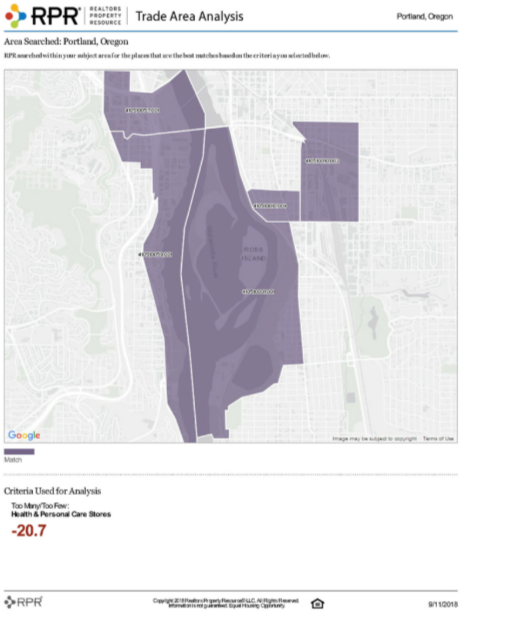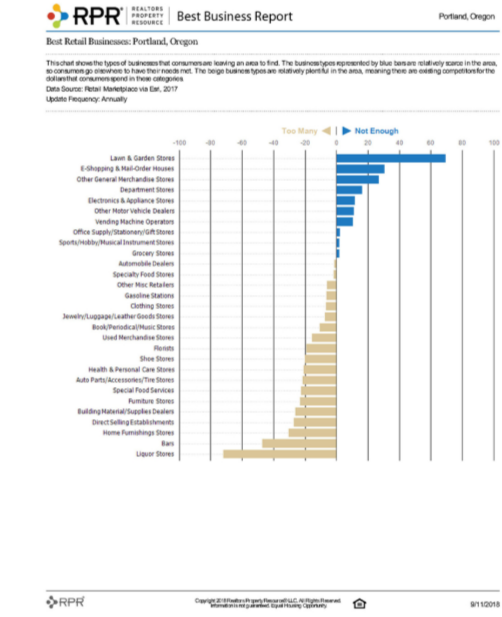You are viewing our site as a Broker, Switch Your View:
Agent | Broker Reset Filters to Default Back to ListWhat is a Retail Gap Analysis?
September 18 2018
 Part of working with retail clients is understanding the supply and demand conditions for the markets they are looking to, or should be looking to enter. This type of research is typically referred to as a retail gap analysis and, luckily for Realtors, it's easier than ever to perform utilizing RPR Commercial.
Part of working with retail clients is understanding the supply and demand conditions for the markets they are looking to, or should be looking to enter. This type of research is typically referred to as a retail gap analysis and, luckily for Realtors, it's easier than ever to perform utilizing RPR Commercial.
Step 1: Define your geographical area based on the distance a typical consumer is willing to travel for said retail good either by using custom boundaries created with a drive time and radius tool, or municipal created boundaries like cities or neighborhoods.
Step 2: Choose which version of RPR's gap analysis tools to use. The first helps you determine where a good location may work for a retail business and the second shows you what retail businesses would fit the needs of an area. Click the examples below to view the full reports:
What are these reports actually saying?
These reports are showing you what is known as the Leakage/Surplus Factor, which presents a snapshot of the opportunity for each sector. This factor measures the relationship between supply and demand that ranges from +100 (total leakage) to -100 (total surplus). A positive value represents 'leakage' of opportunity to retailers outside the area. A negative value represents a surplus of retail sales, indicating a market where customers are drawn in from outside the area. This factor is a result of Esri looking at the dollar value of consumer expenditures made by local area residents to determine demand and then measure the retail sales of the businesses in that same area to measure supply.
Gaps are created when retailers are not meeting the demand of consumers based on attributes such as price or product/service quality, so they have to go elsewhere to have those met. The other issue may be that there just aren't enough retailers in the area to meet the overall demand of the community.
Closing the Gaps
As a commercial practitioner, your job is to guide clients and attract retailers to fill those gaps across the communities you serve. Just knowing where the leakages are isn't enough. So once you have identified the area and sectors showing opportunities, you need to do some digging to understand if the current retailers are set up to meet the demands of the potential consumers in the area.
For example, if there are a currently discount stores serving clients in an area that is transitioning to a more affluent consumer base, can these businesses sustain or might there be even more of a gap coming? Or if a retailer says they cater to young, educated adults with high disposable incomes, can a community support the business criteria and maintain the longevity of this targeted client base?
The quickest way to do an assessment for this is to create the geographical boundary that holds the consumer base and run a custom Trade Area Report in RPR. This report combines economic, demographic, tapestry segments and even the retail gap analysis providing the insights to support your clients decisions to lease to a potential tenant, invest in a property, or operate out of a space.
To view the original article, visit the RPR blog.











